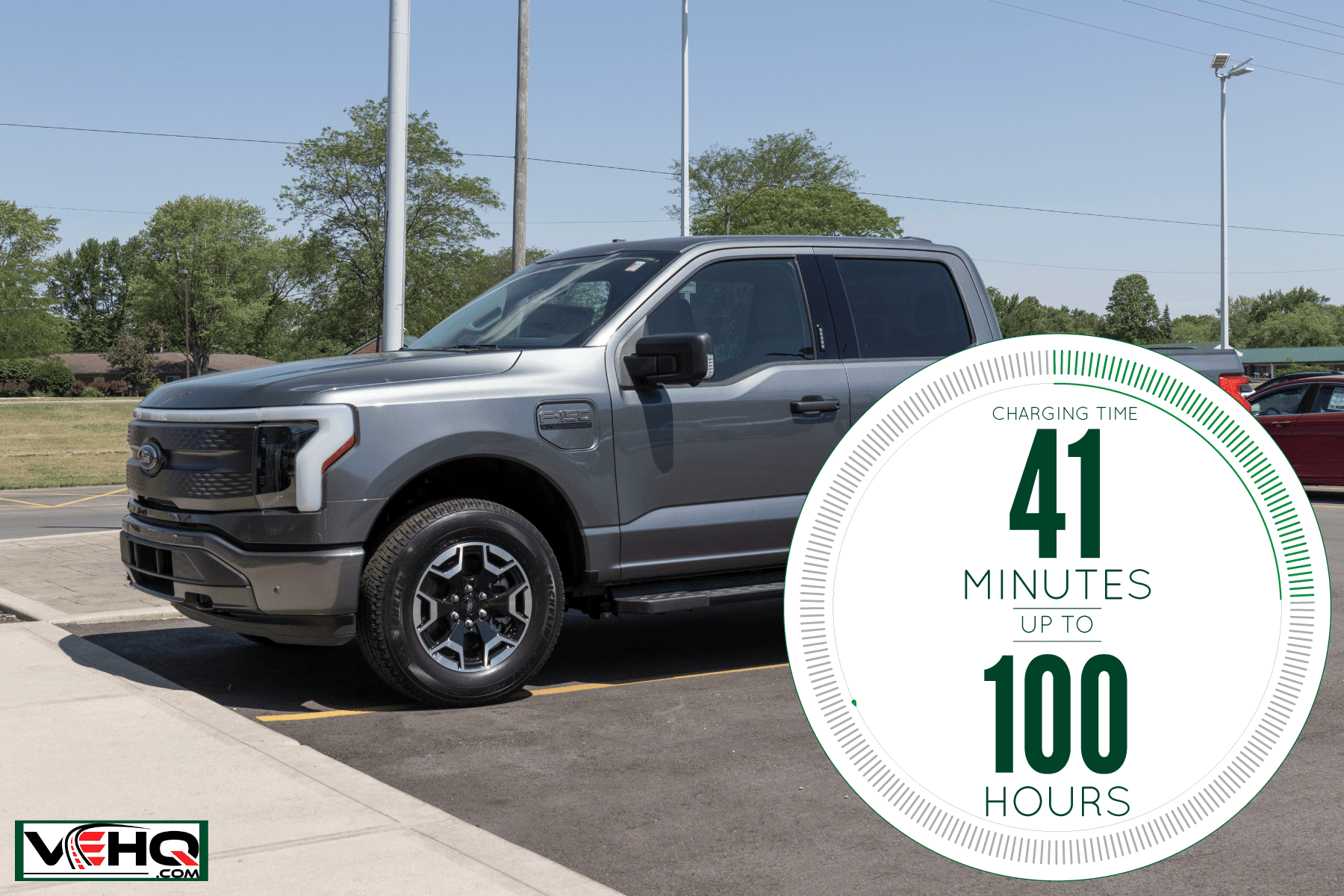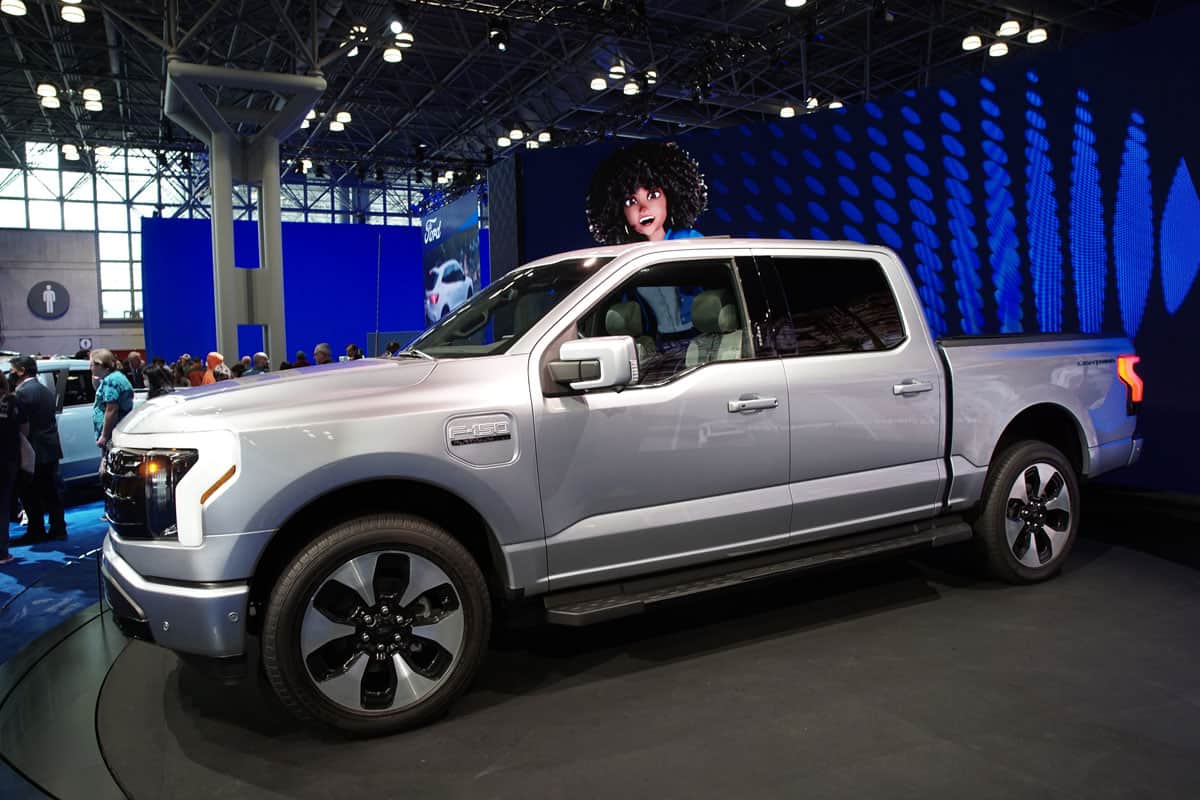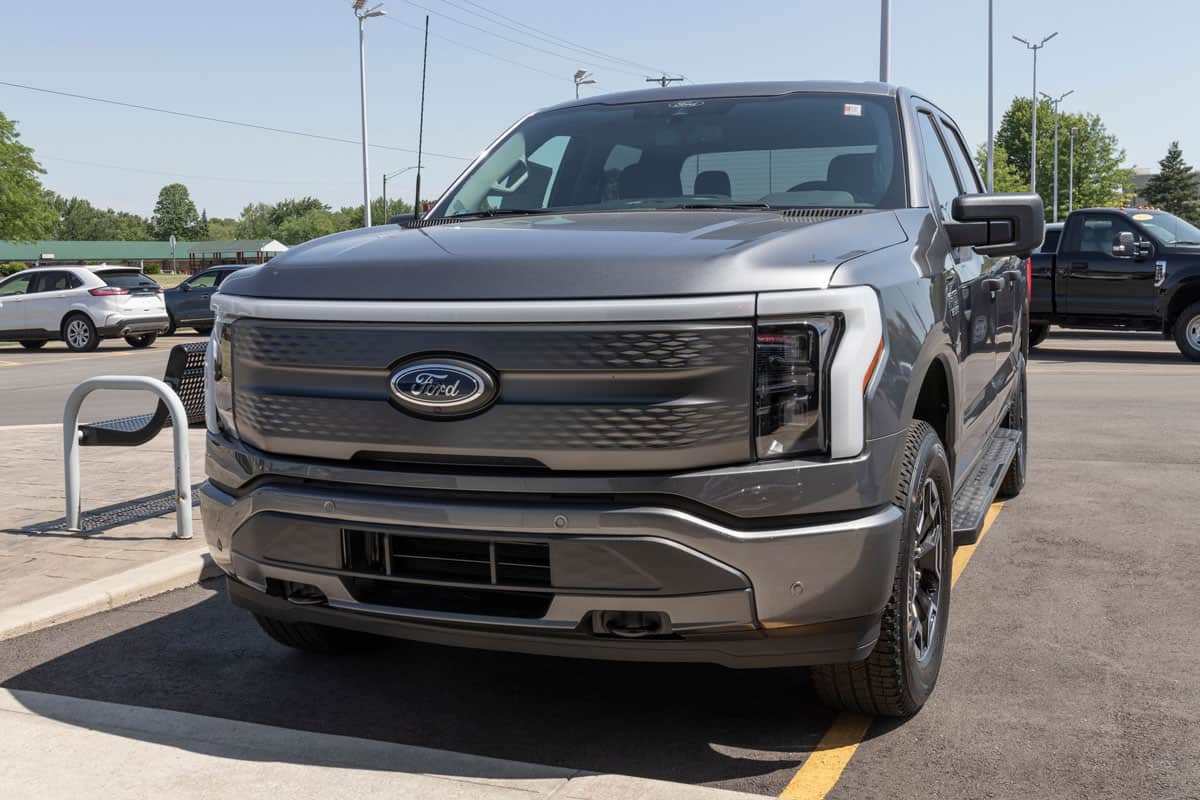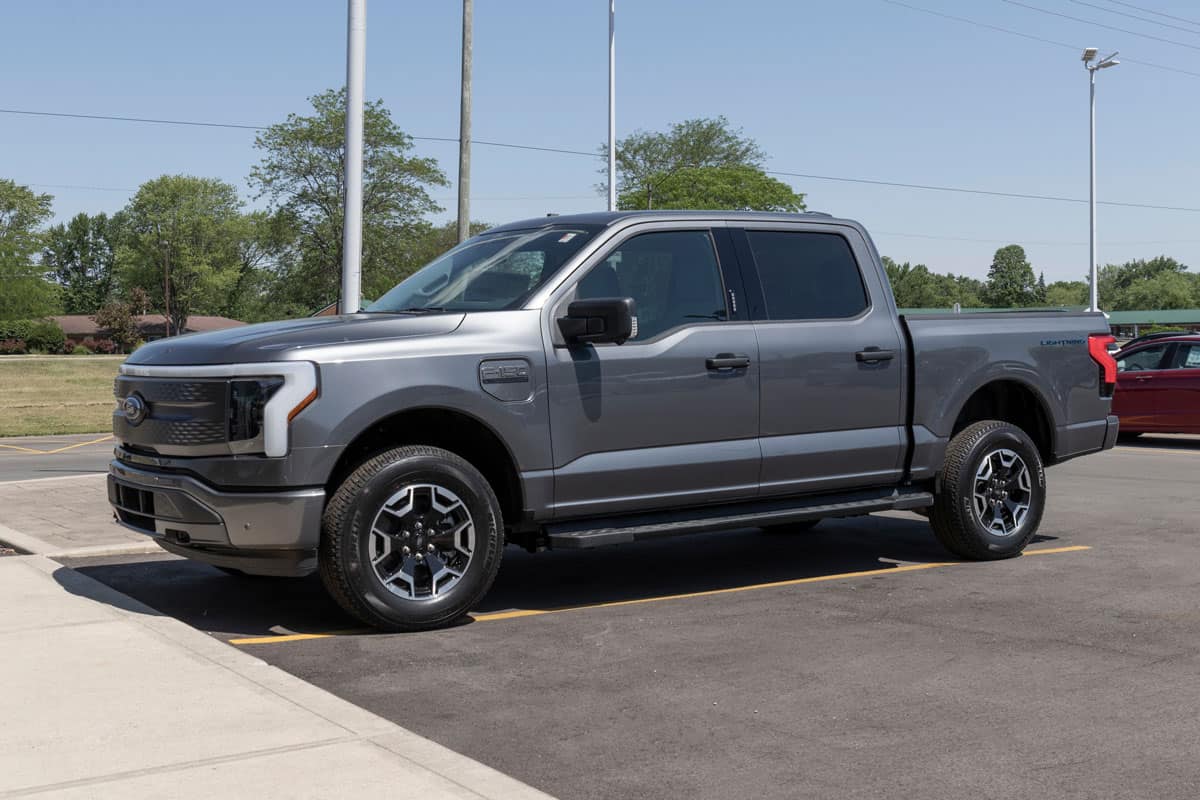For the last two decades, the Ford F-series has dominated the American automotive industry in terms of sales. Some people are also considering going electric with Ford's new fully-electric F-150 Lightning. If you're wondering how long it would take to charge the Lightning, we're here to help.
Depending on the type of battery pack, outlet voltage, and type of charger, a Ford F-150 lightning can take from 41 minutes up to 100 hours to charge.
Of course, this depends on the type of charge you install into your home, so everyone will be slightly different.
If you want to know more about the Ford F-150 Lightning, you've come to the right place. Read on, and we will share how, where, and how much it would cost to recharge the Ford Lightning. We will also discuss other frequently-asked questions about this new electric truck.

How Long Does It Take To Charge A Ford Lightning?
Before discussing charging times, we need to understand that the Ford F-150 Lightning comes with two different battery options. Additionally, we also need to know that the F-150 Lightning has four other charging methods.
The Standard-Range battery has a capacity of 98 kilowatt-hours (kWh) and a 230-mile driving range. On the other hand, the Extended-Range battery has a 131-kWh capacity and a 300 to 320-mile driving range.
The Ford F-150 Lightning's four charging methods are listed below according to their charging speed, from slowest to fastest. Charging times are measured from a 15% starting charge up to a full charge.
- Mobile Power Cord - Level 1 charging up to 100 hours
- Level 2 charging between 10 to 15 hours
- Connected Charge Station - Level 2 charging - 10 to 15 hours
- Charge Station Pro - Level 2 charging - 8 to 10 hours
- Public DC Fast Charging Station - Level 3 charging - 41 to 44 minutes
How Long Does It Take To Charge A Ford Lightning At Home?
If you charge your Ford Lightning at home, you can choose from a few Level 1 or Level 2 charging methods.
What Is Ford's Mobile Power Cord?
All Ford Lightning trims come with a standard 30-ampere Mobile Power Cord, providing both Level 1 and Level 2 charging capabilities.
When plugged into a standard 120-volt outlet, the Mobile Power Cord acts as a Level 1 charger, adding 2 to 3 miles of driving range per charging hour.
At a conservative 2 miles of range per hour, this Level 1 charging method can top up the Standard-Range battery in 100 hours. On the other hand, the Extended-Range battery will need about 150 hours.
Level 1 charging is indeed prolonged. However, slow and steady charging also provides a better battery life and health than faster-charging methods.
If you only need to use your Lightning for less than 10 to 15 miles per day, Level 1 charging will suffice. Moreover, you can also bring your Mobile Power Cord and plug it into any 120-volt outlet at your destination.
This charger will come in handy during long vacation trips.
However, if you need more driving range every day, Level 2 charging is more appropriate. If you plug the Mobile Power Cord into a NEMA 14-50 240-volt outlet, you can have a Level 2 charging capability.
These are the heavy-duty outlets that usually power ovens and clothes dryers.
At Level 2, you can add 19 to 20 miles of driving range per hour of charging. With Level 2 charging, you can top up your Standard-Range battery in 10 hours. Your Extended-Range battery, in turn, will need 15 hours.
How Much Does It Cost To Charge An Electric Car At Home?
When charging at home, you can treat your Ford F-150 Lightning as a large piece of appliance in terms of electricity consumption. Electricity rates may vary greatly depending on your state.
However, as of April 2022, America's average electricity cost is 15.1 cents or $0.151 per kWh.
If you want to compute your cost per full charge, you can multiply $0.151 by the kWh capacity of each type of battery.
- Standard-Range battery: $0.151 per kWh x 98 kWh = $14.80
- Extended-Range battery: $0.151 per kWh x 131 kWh = $19.78
Alternatively, you may want to compute your cost per mile or 100 miles. In this case, you can divide the cost of one full charge by the driving range of that charge.
- Standard Range battery: $14.80 per full charge / 230 miles = $0.0643 per mile or $6.43 per 100 miles
- Extended Range battery: $19.78 per full charge / 320 miles = $0.0618 per mile or $6.18 per 100 miles
How Long Does It Take To Charge The Ford Lightning At A DC Fast Charging Station?

Many public direct current (DC) fast chargers can deliver between 50 to 350 kW of power to BEVs.
However, the Ford F-150 Lightning can only accommodate 120 kW for its Standard-Range battery and 150 kW for its Extended-Range battery.
With a 150 kW DC fast charger, the 98-kWh Standard-Range battery can go from 15-80% charge in roughly 44 minutes.
On the other hand, the 131-kWh Extended-range battery can go from 15-80% in approximately 41 minutes.
How Much Does It Cost To Charge An Electric Car At A DC Fast Charging Station?
Ford gives Lightning buyers a free 2-year complimentary access to Blue Oval, North America's largest public charging network. As of June 2022, this network consists of 19,500 Level 2 and Level 3 charging stations in the U.S.
Moreover, Lightning buyers also get 250 kWh worth of free charge from Electrify America, the country's largest DC fast charger (Level 3) network.
However, after the free 250 kWh charge, you will need to pay Electrify America per kWh or per minute of charging. Rates vary depending on the Electrify America charging station's state location as well as the membership status of the vehicle owner.
For example, in Delaware, Electrify America guests and Pass members need to pay $0.43 per kWh. On the other hand, Pass+ (plus) members have a preferential rate of $0.31 per kWh.
- Standard-Range battery: $0.31 per kWh x 98 kWh = $30.38
- Extended-Range battery: $0.31 per kWh x 131 kWh = $40.61
Even as an Electrify America Pass+ member, you will need to pay twice as much for DC fast charging than Level 1 or Level 2 home charging.
How Efficient Is The Ford Lightning?

If you want to know how much you can save on "fuel," we can compare the home charging cost of the F-150 Lightning to the fuel cost of a gasoline F-150.
According to the United States EPA, the 3.5-liter V6 4WD F-150 has a 19 mpg combined rating or 5.3 gallons per 100 miles.
As of May 30, 2022, America's national average gas price is approximately $4.79 per gallon. For every 100 miles, a V6 F-150 consumes $25.4 worth of gasoline.
Based on these current prices, the F-150 Lightning's 100-mile electricity cost is only 24% of the V6 F-150's 100-mile fuel cost. That equates to $19 worth of savings for every 100 miles.
If you drive 15,000 miles per year, you will save $ 2,850 annually.
You can save over $14,000 on fuel costs by driving a home-charged F-150 Lightning in five years instead of a V6 F-150.
Even if you charge your Lightning at an expensive DC charging station every time, you will still save roughly $7,000 over five years.
How Much Does A Ford F-150 Lightning Cost?
Below are the starting prices of the different Ford F-150 Lightning trims.
- Pro - $39,974
- XLT - $52,974
- Lariat - $67,474
- Platinum - $90,874
These starting prices are accurate as of June 2022.
Final Takeaway

Slow home charging is the cheapest and most beneficial to battery life. DC fast charging will get you back on the road fastest, but it is the most expensive charging option. Plan your trips regularly to know which charging method suits you best.
Thank you very much for reading. We hope we were able to help you understand more about the Ford F-150 Lightning's charging time and methods.
Made it to the end? Check out these related posts!
